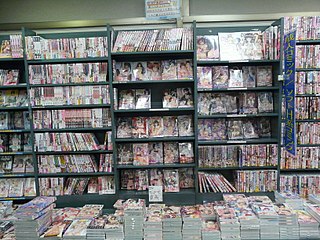
Hentai is a style of Japanese pornographic anime and manga. In addition to anime and manga, hentai works exist in a variety of media, including artwork and video games.
Shōnen manga is an editorial category of Japanese comics targeting an audience of adolescent boys. It is, along with shōjo manga, seinen manga, and josei manga, one of the primary editorial categories of manga. Shōnen manga is traditionally published in dedicated manga magazines that exclusively target the shōnen demographic group.
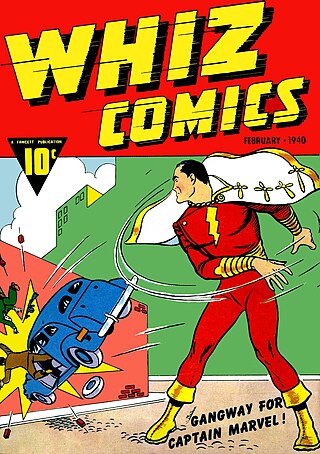
A superhero or superheroine is a stock character who typically possesses superpowers or abilities beyond those of ordinary people, is frequently costumed concealing their identity, and fits the role of the hero; typically using their powers to help the world become a better place, or dedicating themselves to protecting the public and fighting crime. Superhero fiction is the genre of fiction that is centered on such characters, especially, since the 1930s, in American comic books, as well as in Japanese media.
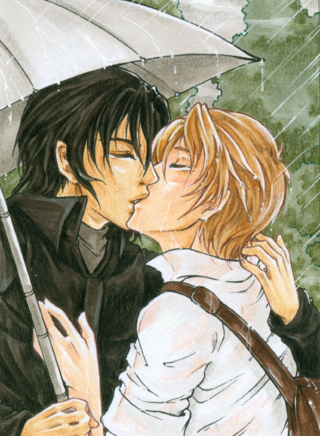
Yaoi, also known as boys' love and its abbreviation BL, is a genre of fictional media originating in Japan that features homoerotic relationships between male characters. It is typically created by women for women and is thus distinct from bara, a genre of homoerotic media marketed to gay men, though yaoi does also attract a male audience and can be produced by male creators. Yaoi spans a wide range of media, including manga, anime, drama CDs, novels, video games, television series, films, and fan works. While "yaoi" is commonly used in the west as an umbrella term for Japanese-influenced media with male-male relationships, "boys' love" and "BL" are the generic terms for this kind of media in Japan and much of Asia.
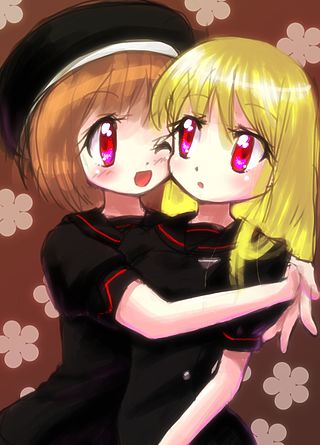
Yuri, also known by the wasei-eigo construction girls' love, is a genre of Japanese media focusing on intimate relationships between female characters. While lesbianism is a commonly associated theme, the genre is also inclusive of works depicting emotional and spiritual relationships between women that are not necessarily romantic or sexual in nature. Yuri is most commonly associated with anime and manga, though the term has also been used to describe video games, light novels, and literature.
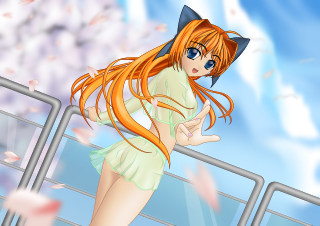
Ecchi is a slang term in the Japanese language for playfully sexual actions. As an adjective, it is used with the meaning of "sexy", "dirty" or "naughty"; as a verb, ecchi suru means "to have sex", and as a noun, it is used to describe someone of lascivious behavior. It is softer than the Japanese word ero, and does not imply perversion in the way hentai does.
A magical girlfriend, exotic girlfriend, monster girlfriend, nonhuman woman, or supernatural lover, is a female stock character often associated with romantic comedy anime and manga series, and is sometimes considered a genre of its own, or as the leading lady of the "fantastic romance" genre, which combines the fantasy and romance genres.

Tentacle erotica is a type of pornography most commonly found in Japan that integrates traditional pornography with elements of bestiality, fantasy, horror, and science fiction. It is found in some horror or hentai titles, with tentacled creatures having sexual intercourse, predominantly with females or, to a lesser extent, males. Tentacle erotica can be consensual but mostly contains elements of rape.

The final girl is a trope in horror films. It refers to the last girl(s) or woman alive to confront the killer, ostensibly the one left to tell the story. The final girl has been observed in many films, including Psycho, Voices of Desire, The Texas Chain Saw Massacre, Halloween, Alien, Friday the 13th, A Nightmare on Elm Street, Scream, and Train to Busan. The term was coined by Carol J. Clover in her article "Her Body, Himself: Gender in the Slasher Film" (1987). Clover suggested that in these films, the viewer began by sharing the perspective of the killer, but experienced a shift in identification to the final girl partway through the film.
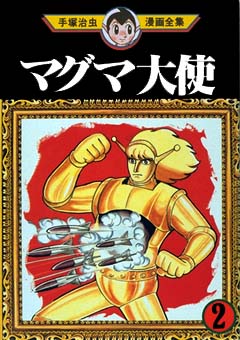
Ambassador Magma is the title and protagonist of a manga and tokusatsu TV series created by Osamu Tezuka. The TV series, produced by P Productions, aired on Fuji TV from July 4, 1966, to June 26, 1967, lasting a total of 52 episodes. It is the first color tokusatsu TV series in Japan, beating Tsuburaya Productions' Ultraman to the air by six days. The show later aired in the US, dubbed in English by Krantz Films, as The Space Giants. Digital Manga crowdfunded the manga, and it is currently available for digital purchase on their Emanga site.
The following is a glossary of terms that are specific to anime and manga. Anime includes animated series, films and videos, while manga includes graphic novels, drawings and related artwork.

Moe anthropomorphism is a form of anthropomorphism in anime, manga, and games where moe qualities are given to non-human beings, objects, concepts, or phenomena. In addition to moe features, moe anthropomorphs are also characterized by their accessories, which serve to emphasize their original forms before anthropomorphosis. The characters here, usually in a kind of cosplay, are drawn to represent an inanimate object or popular consumer product. Part of the humor of this personification comes from the personality ascribed to the character and the sheer arbitrariness of characterizing a variety of machines, objects, and even physical places as cute.

Erotic comics are adult comics which focus substantially on nudity and sexual activity, either for their own sake or as a major story element. As such they are usually not permitted to be sold to legal minors. Like other genres of comics, they can consist of single panels, short comic strips, comic books, or graphic novels/albums. Although never a mainstream genre, they have existed as a niche alongside – but usually separate from – other genres of comics.
Bara is a colloquialism for a genre of Japanese art and media known within Japan as gay manga (ゲイ漫画) or gei komi. The genre focuses on male same-sex love, as created primarily by gay men for a gay male audience. Bara can vary in visual style and plot, but typically features masculine men with varying degrees of muscle, body fat, and body hair, akin to bear or bodybuilding culture. While bara is typically pornographic, the genre has also depicted romantic and autobiographical subject material, as it acknowledges the varied reactions to homosexuality in modern Japan.
Centaurs appear often in popular culture. Some appearances are also listed under Centaurides.

Magical girl is a subgenre of primarily Japanese fantasy media centered on young girls who possess magical abilities, which they typically use through an ideal alter ego into which they can transform.

The representation of gender in horror films, particularly depictions of women, has been the subject of critical commentary.
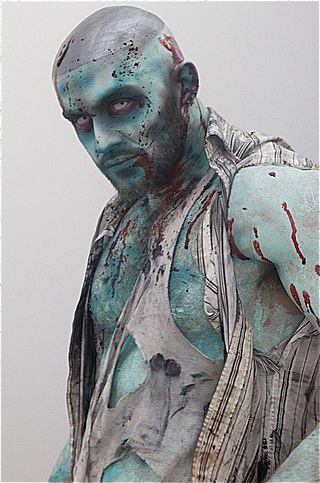
Monster erotica, also referred to as monster porn or cryptozoological erotica is a subgenre of erotic horror that involves sexual encounters between humans and monsters.

Kaiju Girls is a Japanese series of web anime shorts that first aired September 27, 2016, provided by the Docomo Anime Store service. These shorts are part of the Ultra Monsters Anthropomorphic Project, a moe anthropomorphism project made by Tsuburaya Productions based on past monsters/aliens that have appeared in the Ultra Series. Other than the short series, a manga series, a novel series and other projects are being considered in development. A second season premiered in 2018. A sequel film, titled Kaiju Girls (Black), was released on November 23, 2018.
Isekai is a subgenre of portal fantasy. It includes novels, light novels, films, manga, anime, and video games that revolve around a displaced person or people who are transported to and have to survive in another world, such as a fantasy world, game world, or parallel universe without the possibility of returning to their original world. Isekai is one of the most popular genres of anime, and isekai stories share many common tropes – for example, a powerful protagonist who is able to beat most people in the other world by fighting. This plot device typically allows the audience to learn about the new world at the same pace as the protagonist over the course of their quest or lifetime. If the main characters are transported to a game-like world, the genre can overlap with LitRPG.















